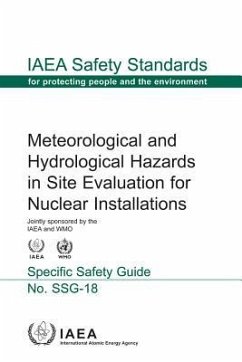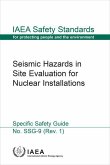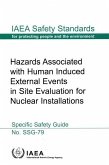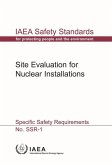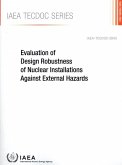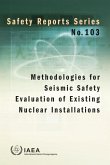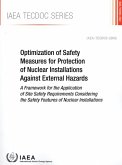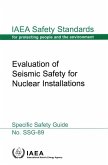This IAEA Safety Guide, which is jointly sponsored by the World Meteorological Organization, provides recommendations and guidance on how to comply with the safety requirements on assessing hazards associated with meteorological and hydrological phenomena. It includes the state-of-practice in the international community for dealing with these external natural hazards, considering the lessons learned from recent catastrophic events as well as from new findings on climate variability. Furthermore, the publication provides recommendations on how to determine the corresponding design bases for these natural hazards, and recommends measures for protection of the site against hazards of this type. This Safety Guide is intended for use by regulatory bodies, designers of nuclear installations, and operating organizations responsible for the safety of installations and for the protection of people and the environment from harmful effects of ionizing radiation. This IAEA Safety Guide, which is jointly sponsored by the World Meteorological Organization, provides recommendations and guidance on how to comply with the safety requirements on assessing hazards associated with meteorological and hydrological phenomena. It includes the state-of-practice in the international community for dealing with these external natural hazards, considering the lessons learned from recent catastrophic events as well as from new findings on climate variability. Furthermore, the publication provides recommendations on how to determine the corresponding design bases for these natural hazards, and recommends measures for protection of the site against hazards of this type. This Safety Guide is intended for use by regulatory bodies, designers of nuclear installations, and operating organizations responsible for the safety of installations and for the protection of people and the environment from harmful effects of ionizing radiation. Contents: 1. Introduction; 2. General considerations and recommendations; 3. Necessary information and investigations (databases); 4. Assessment of meteorological hazards; 5. Assessment of hydrological hazards; 6. Determination of design parameters; 7. Measures for site protection; 8. Changes of hazards with time; 9. Monitoring and warning systems for the protection of installations; 10. Nuclear installations other than nuclear power plants; 11. Management system for hazard assessments; Annex I: Examples of criteria for defining basis parameters for meteorological variables; Annex II: Assessment of tsunami hazard: Current practice in the States; Annex III: Tsunami warning systems; Annex IV: Climate change.
Hinweis: Dieser Artikel kann nur an eine deutsche Lieferadresse ausgeliefert werden.
Hinweis: Dieser Artikel kann nur an eine deutsche Lieferadresse ausgeliefert werden.

